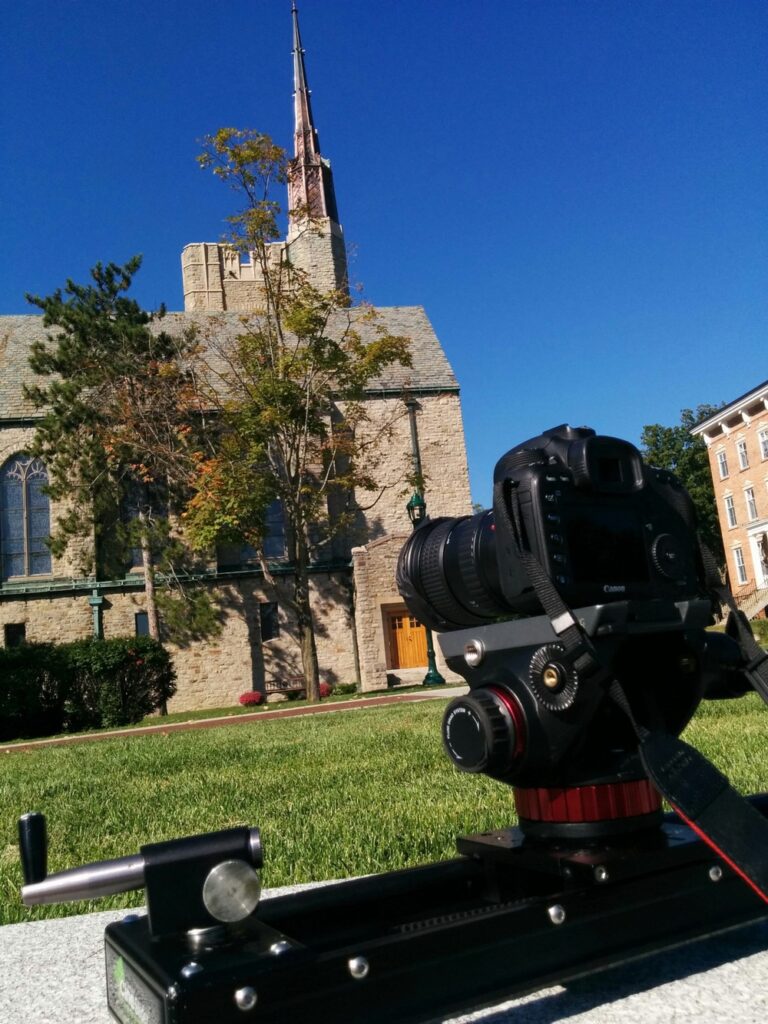It’s not often for a shoot at Galileo that we get to work with time-lapse videography but when brainstorming for a creatively stylized shoot for St. Lawrence University, we decided that with a sophisticated approach to this well known technique, it could have a great impact.
When time-lapse photography is utilized to capture movement that is so subtle that it is imperceivable to the human eye, it results in smooth movement of the subject, such as the setting sun or the movement of stars in the sky. On the other hand, if a videographer decides to shoot a subject that is already moving at a noticeable rate, it results in footage that has more energy and movement to it, but can often feel haphazard.

Alex Kenyon, cinematographer (who’s now heading up video production in our Boston location!), thought of a great way to get the lively content of students walking around campus, without getting the jerky feeling that a typical time-lapse would produce. we programmed the camera to expose each image of the time-lapse for 3 seconds, which is much longer than most people think to do. In this way, he actually caught the movement of people within each image, not just throughout the entire time-lapse. This resulted in footage that showed the movement of the crowds of students at St. Lawrence in a smooth manner that is pleasing to the eye. If that weren’t interesting enough, we also used a cineslider, which created movement of the camera throughout the recording of the time-lapse that was slow and steady enough that when sped up, it created a smooth slider movement.

To put it shortly, the Galileo team spent a lot of time brainstorming the best way to capture a sophisticated time-lapse for our shoot at St. Lawrence. Not only did we rethink how to capture a time-lapse by increasing the exposure length of each individual photo, but we also added movement to the camera using an electric slider. Adding movement in real time to the camera while considering how we would have to speed up the recorded images that already had movement within them resulted in some really exciting footage.


